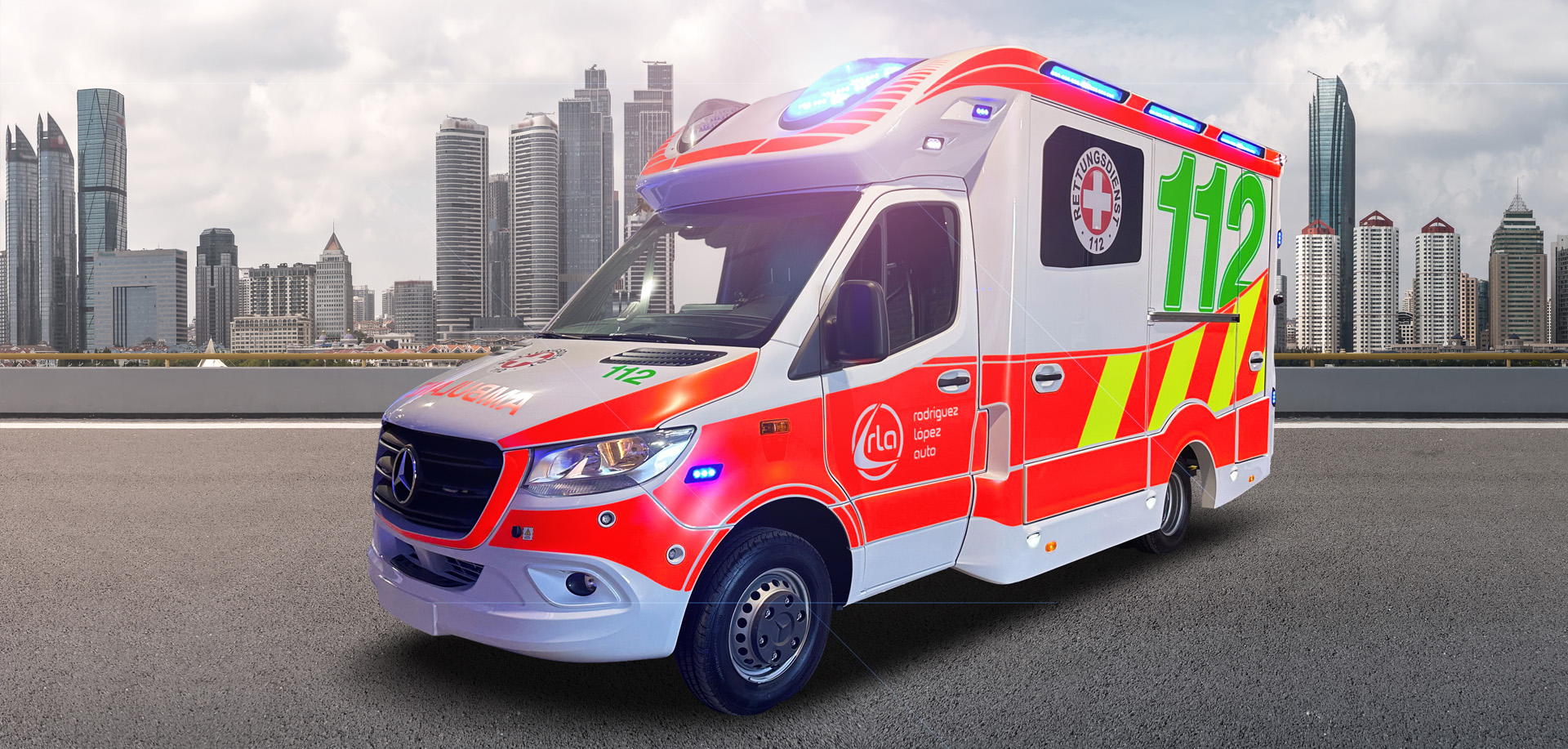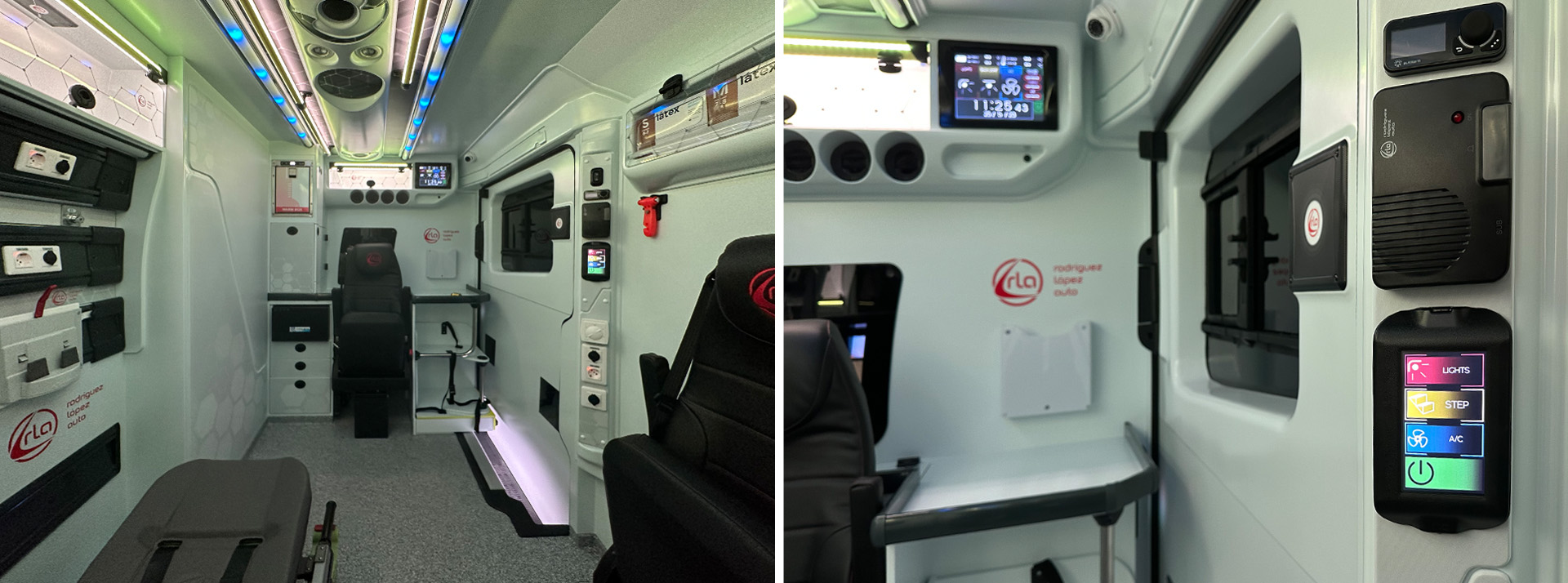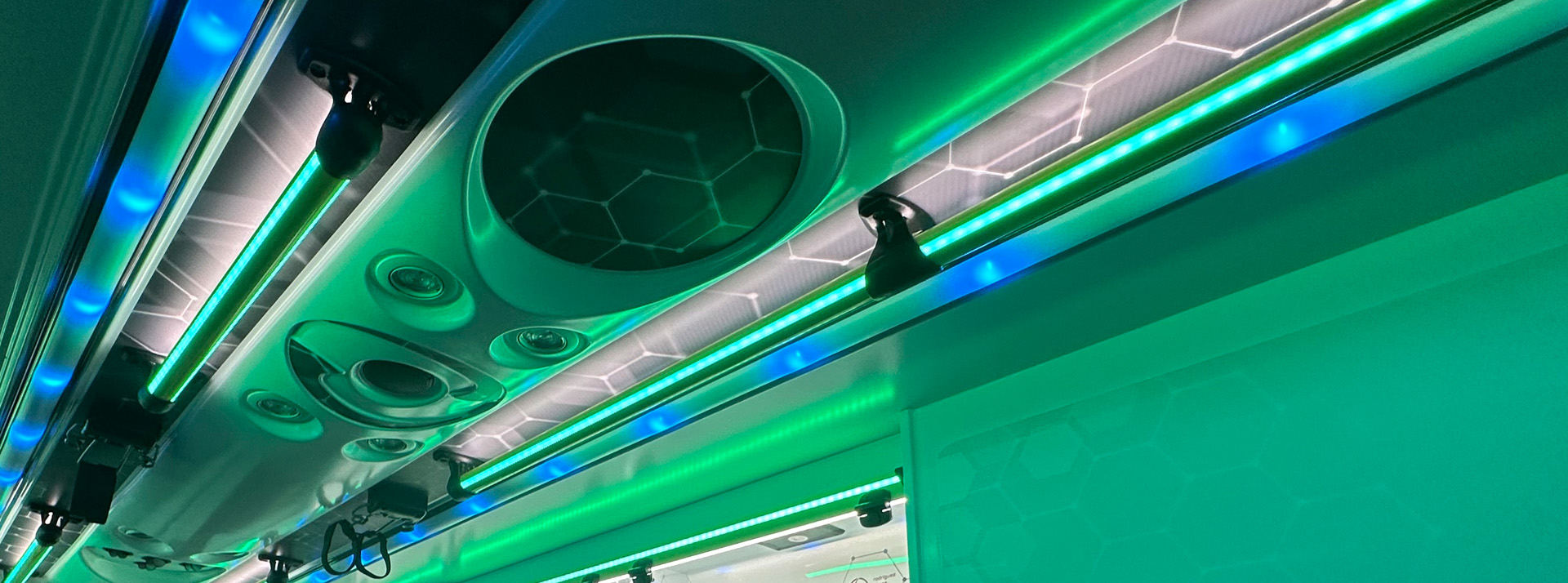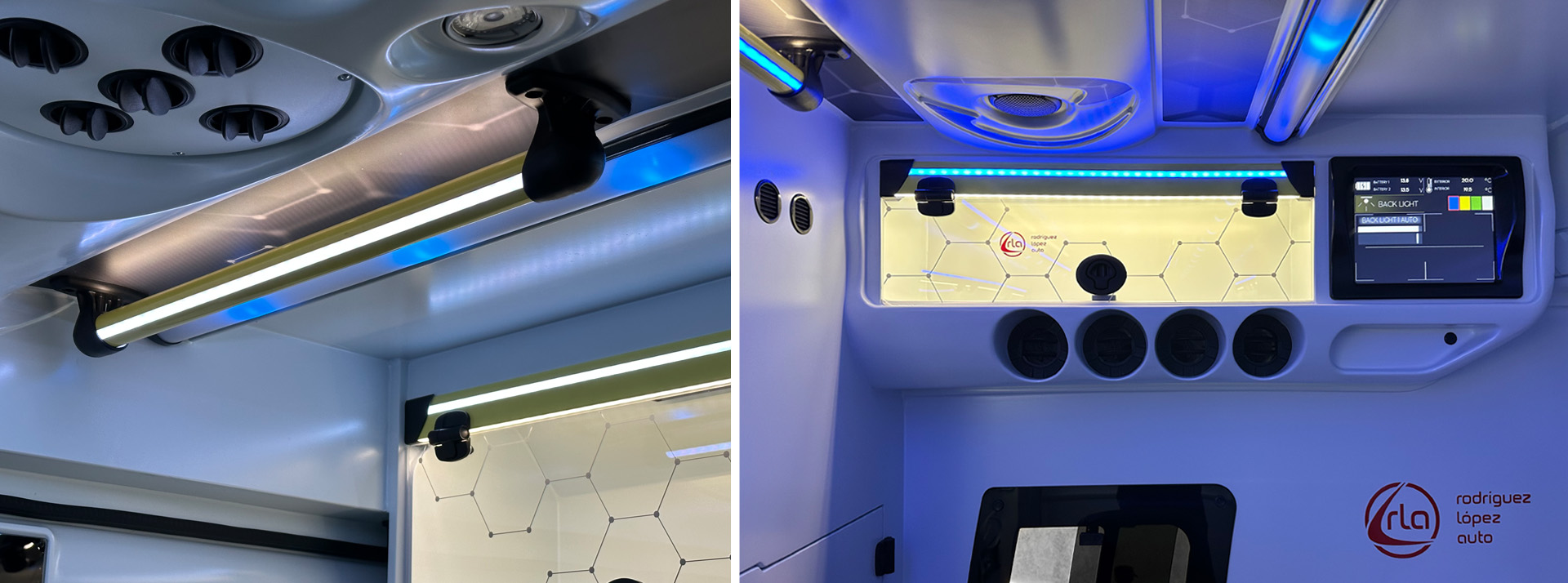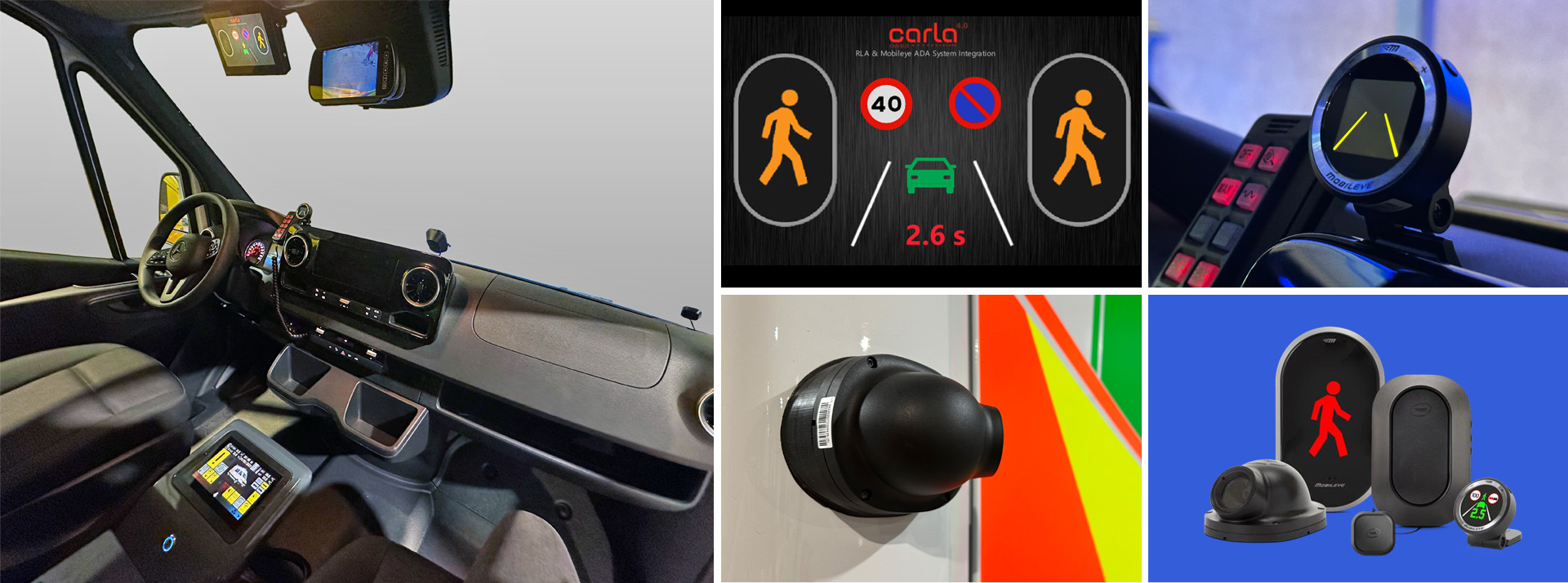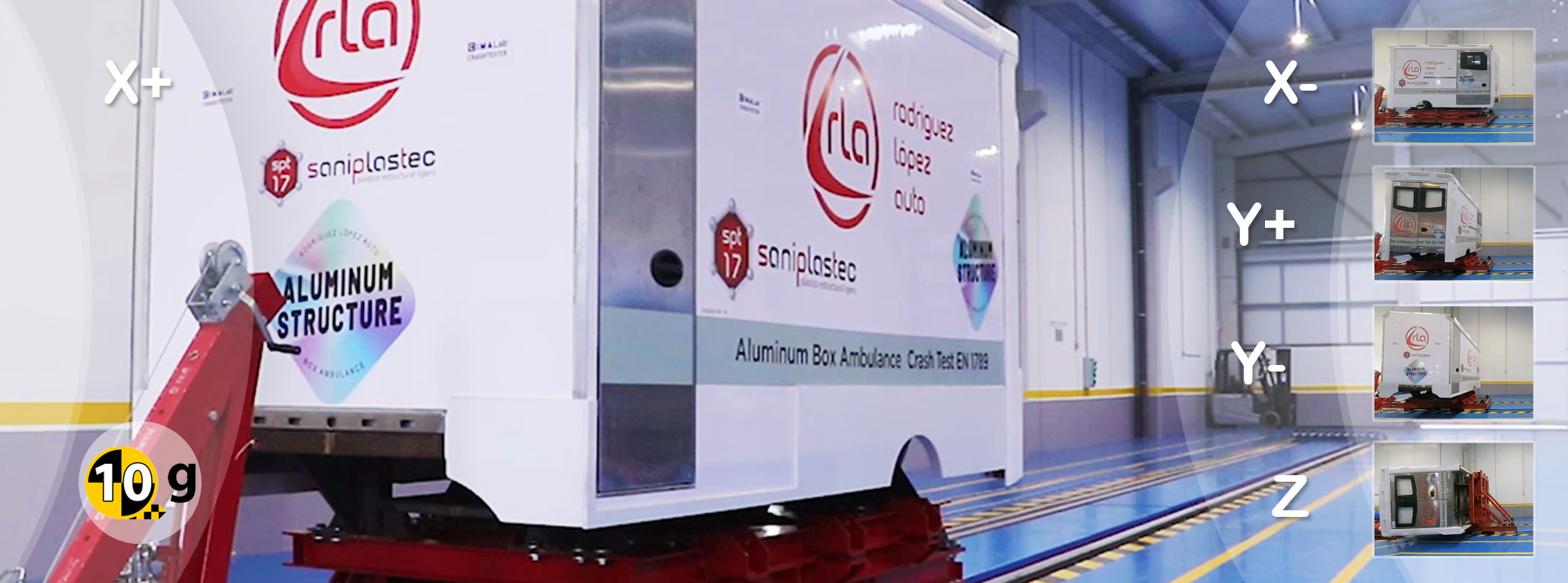More space for better care
Improving the capabilities of an ambulance on a van, the use of a chassis-cab as a base in an emergency vehicle allows the design of a larger, more comfortable and ergonomic health cell, which translates into better patient care. In addition, it is an optimal solution for bariatric patients, even allowing the installation of an automatic lifting platform to facilitate loading.
On the other hand, the storage capacity is favored by the increase in space. The incorporation of exterior doors allows rapid access to rapid intervention medical equipment (evacuation chairs, spinal boards, etc.).
The design and engineering applied in the entirely aluminum construction have allowed the manufacture of one of the lightest chassis-cabin ambulances on the market, with a low level of noise and vibrations when running. On the outside, a fully integrated bodywork has been developed with the driver's cab, which favors aerodynamics and improves consumption. The set also incorporates 360º emergency signaling, perimeter lighting, area lighting on two levels (upper and lower) and a rear directional light bar.
As a novelty, it incorporates two side sliding doors, one for access to the health compartment with automatic step and lighting, and another for access to oxygen bottles and maintenance of the electrical panel or other applications.
The entire assembly complies with the requirements of the European Standard EN1789, for which all tests have been successfully passed, including the 10G crash test in all five axes. The European homologation password allows registration as a Type C or Type B ambulance in any country of the European Union, or legalization as a life support ambulance in other countries.
Advantage
- Aluminum box
- More interior space for better care
- More interior and exterior storage space
- Double side sliding door
- Optimal for bariatric use
- Adjustable pneumatic suspension for better comfort and ease of loading or unloading the stretcher
- Low noise level and running vibrations
- Integral aerodynamic design for lower consumption
- Body-integrated emergency lighting and area lighting
- Customizable CARLA 4.0 touch screen system for managing ambulance functions
- Ambulance Type C or Type B according to European Standard EN1789
Options
- Tailor made interior design
- Bench and bariatric stretcher
- Rear automatic platform
- Exterior doors for the storage of action medical equipment
- Customizable emergency lighting
- Backlit furniture fronts with aluminum front profile and RGB LED lighting configurable through CARLA for better color identification of medical equipment
- ADAS driving assistance system integrated in CARLA (active safety with frontal collision detection and lateral blind spots, lane departure alert, speed limit indicator, traffic sign detection and registration system with route mapping and black points
Technical data
| Maximum width | 2.011 mm |
|---|---|
| Maximum length | 4.110 mm (4.810 mm with extra-long box) |
| Maximum height | 2.000 mm |
| Chassis-cab | Mercedes-Benz Sprinter |
|---|---|
| Chassis-cab | MAN TGE |
| Chassis-cab | Volkswagen Crafter |
| Brochure | Chassis-cab EN 1789 Ambulance |
|---|


